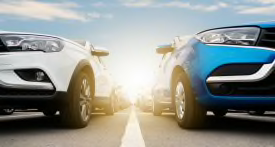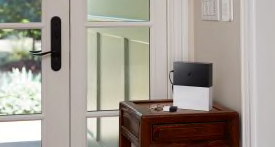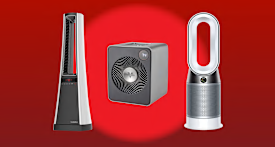This redesigned flagship luxury sedan has impressive handling capabilities and infuriating controls
After almost 50 years, the Mercedes-Benz S-Class may very well be looking at the sunset of its existence. With the automaker investing in electric vehicle platforms and introducing another large luxury sedan, the all-electric EQS, later this year, the era of S-Class sedans powered by a six-, eight-, or even 12-cylinder engine will eventually go the way of the dodo.
Of course, that future isn’t here quite yet. The redesigned S580 that we rented from Mercedes-Benz is an incredibly impressive sedan from a model line that still has many years of life ahead of it.
The S-Class sits near the top of Mercedes-Benz’s sedan lineup, surpassed only by the S-Class Maybach (a rare uber-flagship that starts at $184,900 and competes against vehicles from Aston Martin, Bentley, and Rolls-Royce). But with a starting price of $109,800, the “regular” S-Class certainly isn’t cheap. Its competitors include the Audi A8, BMW 7 Series, Genesis G90, Lexus LS, Maserati Quattroporte, and Porsche Panamera.
For now, the S-Class is available in two versions. The S500 comes with a 429-hp, 3.0-liter turbocharged six-cylinder engine, and the S580 is powered by a 496-hp, 4.0-liter twin-turbo V8. Both sedans use a nine-speed automatic transmission and have standard all-wheel drive. If history is a guide, then it's likely that, down the road, a high-performance AMG version (or two) of the S-Class will be unveiled.
The S-Class comes standard with almost every advanced safety feature, such as forward collision warning, automatic emergency braking, blind spot warning, and lane keeping assistance.
The blind spot warning system can take corrective action if the driver attempts to move into an occupied lane. The sensors also tie into an exit function, warning about a vehicle or bicycle passing by as an occupant attempts to open the door when parked.
Another enhancement is with the evasive steering assist, which can help avoid pedestrians, bicyclists, and vehicles that are crossing the car’s path or even moving alongside it.
Among its tricks, the S-Class comes with a dynamic air suspension system that can adjust the ride height.
While it’s promoted to optimize performance and fuel economy, along with optimizing ride quality, it is also tied in with an optional body-control system that monitors for potential side impact. If a side collision is imminent, the suspension will raise the car within a few tenths of a second to protect occupants better by moving the strong floor’s structure height closer to a typical bumper height.
One downside that this new technology can bring has been dismal reliability. The more features a car has, the more there is to go wrong. And with an S-Class, that can mean expensive repairs out of warranty. This is something that we will certainly be watching in our member surveys.
This will be our only look at the S-Class, because the high cost and limited appeal of the gas-powered S-Class makes it almost impossible to justify purchasing one for testing.
We may, however, purchase our own EQS to test when it goes on sale. This is mainly because it has superseded the S-Class as a testbed for Mercedes-Benz’s latest tech, much of which routinely trickles down to less-expensive models. Buying an EQS would give us, and you, a preview of coming features.























